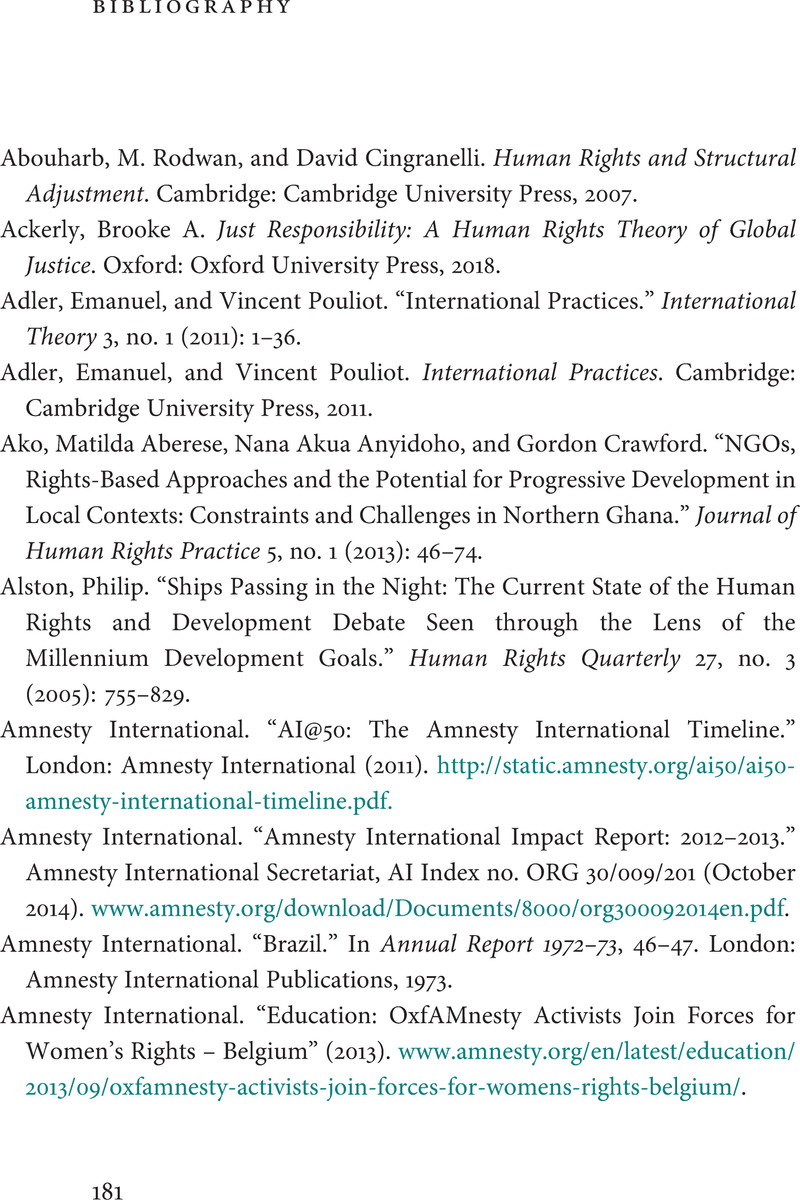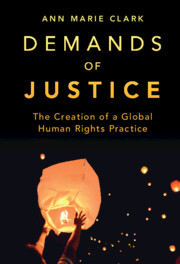Book contents
- Demands of Justice
- Demands of Justice
- Copyright page
- Dedication
- Epigraph
- Contents
- Figures
- Tables
- Preface
- Acknowledgments
- 1 Introduction
- 2 Human Rights and Justice in Global Politics
- 3 Human Rights Tools in the Pursuit of Justice
- 4 Expanding the Global Neighborhood
- 5 A Human Rights Culture of Argument
- 6 “Together for Rights”
- 7 Conclusion
- Bibliography
- Index
- References
Bibliography
Published online by Cambridge University Press: 03 March 2022
- Demands of Justice
- Demands of Justice
- Copyright page
- Dedication
- Epigraph
- Contents
- Figures
- Tables
- Preface
- Acknowledgments
- 1 Introduction
- 2 Human Rights and Justice in Global Politics
- 3 Human Rights Tools in the Pursuit of Justice
- 4 Expanding the Global Neighborhood
- 5 A Human Rights Culture of Argument
- 6 “Together for Rights”
- 7 Conclusion
- Bibliography
- Index
- References
Summary

- Type
- Chapter
- Information
- Demands of JusticeThe Creation of a Global Human Rights Practice, pp. 181 - 195Publisher: Cambridge University PressPrint publication year: 2022

